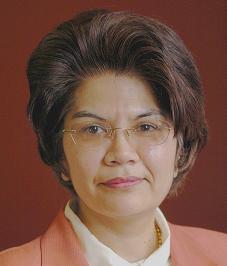Guest Editor: Kerry Wynn, Southeast Missouri State University
Editor: Tazim R. Kassam, Syracuse University
 Tazim R. Kassam, Spotlight on Teaching Editor Tazim R. Kassam, Spotlight on Teaching Editor
According to the 2003 U.S. Census, one in seven persons in the U.S. has a disability, a figure that translates to some 37.5 million people, many of whom have severe disabilities. Fifty-three percent of them, or 19.9 million, are between the ages of 21 and 64.1 As educators, it is essential to be aware of various forms of discrimination as they pertain to equal access and opportunity for diverse groups, especially those groups that have been historically marginalized; and to understand, practically speaking, how laws that safeguard equal access and opportunity, such as the Americans with Disabilities Act of 1990 and Section 504 of the Rehabilitation Act of 1973, apply to teachers in the classroom. The global need to uphold equitable standards of access for people with disabilities was affirmed by the U.N. in 1993 when it adopted The Standard Rules on the Equalization of Opportunities for Persons with Disabilities.
This issue of Spotlight is devoted to highlighting the concerns and rights of people with disabilities, many of whom are our students, fellow colleagues, and staff, and to offering pragmatic ways of ensuring that educational practices and pedagogies are nondiscriminatory and inclusive.
The AAR Task Force on Religion and Disabilities was established in 2002 to make recommendations to the Board on how to address the needs of Academy members with disabilities. In order to better ascertain these needs, the Task Force conducted a survey of the AAR membership, wherein respondents with disabilities expressed their various concerns, including the practical challenges posed by the size of the Annual Meeting, the distance between sessions and conference hotels, and the accessibility of presentations made during the AAR sessions. In addition to taking up the question of how best to provide suitable accommodations for its members with disabilities, the Task Force also drew attention to the importance of (a) providing faculty with useful information and practical guidelines on teaching students with learning disabilities; and (b) recognizing religion and disability studies as a subdiscipline within religious studies that deserves to be treated as a distinct and legitimate area of academic inquiry. An important outcome of the Task Force’s efforts is the guidelines on accessibility provided on the AAR Web site, which include tips on how to give presentations, design Web pages, and provide facilities and instructional materials that are disability friendly.2
Some practical issues discussed in the following articles include: What are faculty’s legal obligations and what on-campus services are available to assist them in responding optimally to their students with disabilities? What challenges do faculty who are themselves hearing impaired or who have a chronic illness face when teaching or leading classroom discussions? What are the challenges of conveying subject matter saturated with sense-dependent metaphors or visual imagery (iconography, ritual, music) to visually or hearing-impaired students?
Are students who have a visual impairment automatically discouraged from pursuing advanced study that would require them to learn Hebrew, Latin, or Arabic? What classroom and career-related practices inadvertently favor the able-bodied?
Intimately linked to the pragmatic questions of properly accommodating persons with disabilities is the task of critiquing cultural and religiously mediated constructions of disability that underlie the manifold exclusions of social, educational, and institutional practice. Prototypical notions of the ideal and/or normative body, and stigmas of abnormality and deficiency attached to bodies that deviate from these norms, are explored in this issue. The myriad biases and judgments embedded in common phrases that rely on metaphors of disability, such as “fell on deaf ears,” “has a blind spot,” or “is morally crippled,” betray the extent to which negative valences permeate attitudes towards disability. Religious and theological texts are deeply implicated in inscribing on bodies that are infirm, ill, weak, and physically impaired meanings that signify ignorance, evil, sin, moral deficiency, and lack of faith, and consequently evoke a mixture of condemnation, pity, and contempt. Scholars are thus invited to consider the multiple ways that the identification of the holy with beauty, perfection, and the good in religious art and imagination casts into exile bodies that are deemed disabled and defective.
For calling the attention of our readership to disability studies, both in terms of teaching pedagogy and as a legitimate subdiscipline, thanks are due to the guest editor of this issue, Kerry Wynn, who chairs the Task Force on Religion and Disability, as well as to the members of the Task Force and the individual contributors.
Endnotes
1 Thanks to William Erickson, MS, Research Specialist at Cornell University’s Employment and Disability Institute for providing this information. See www.disabilitystatistics.org and www.edi.cornell.edu.
2 See www.aarweb.org/About_AAR/Accessibility.
|

